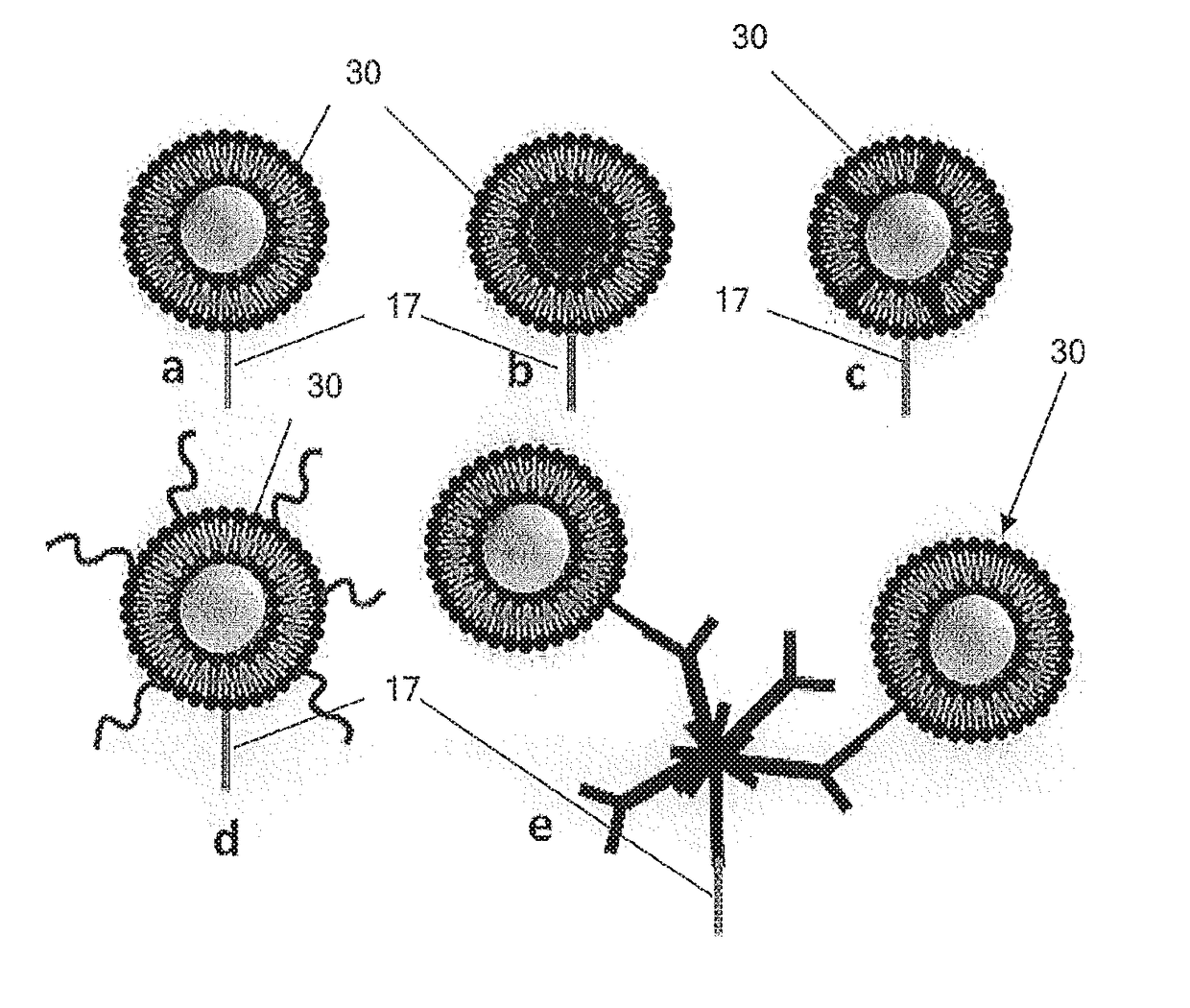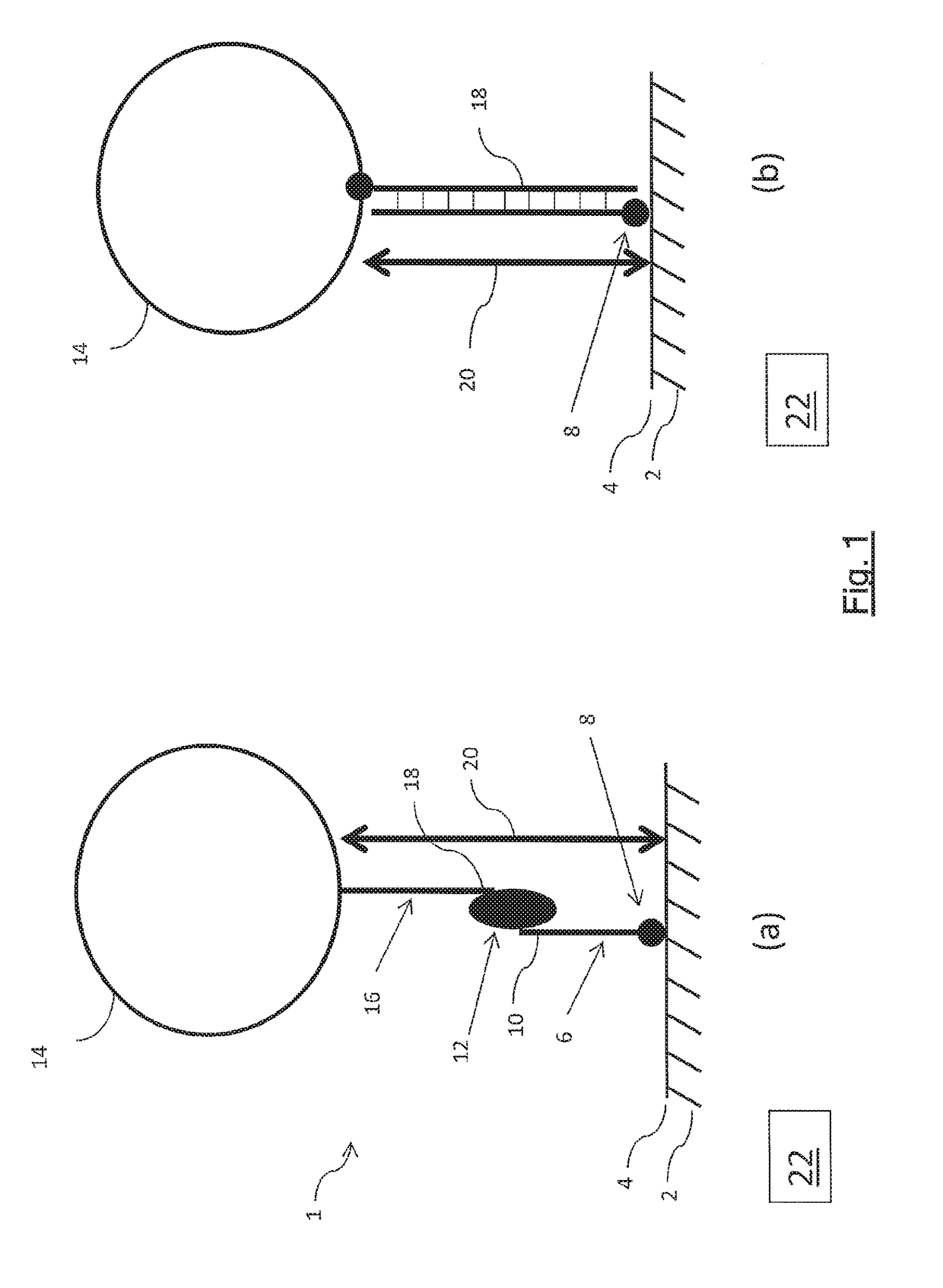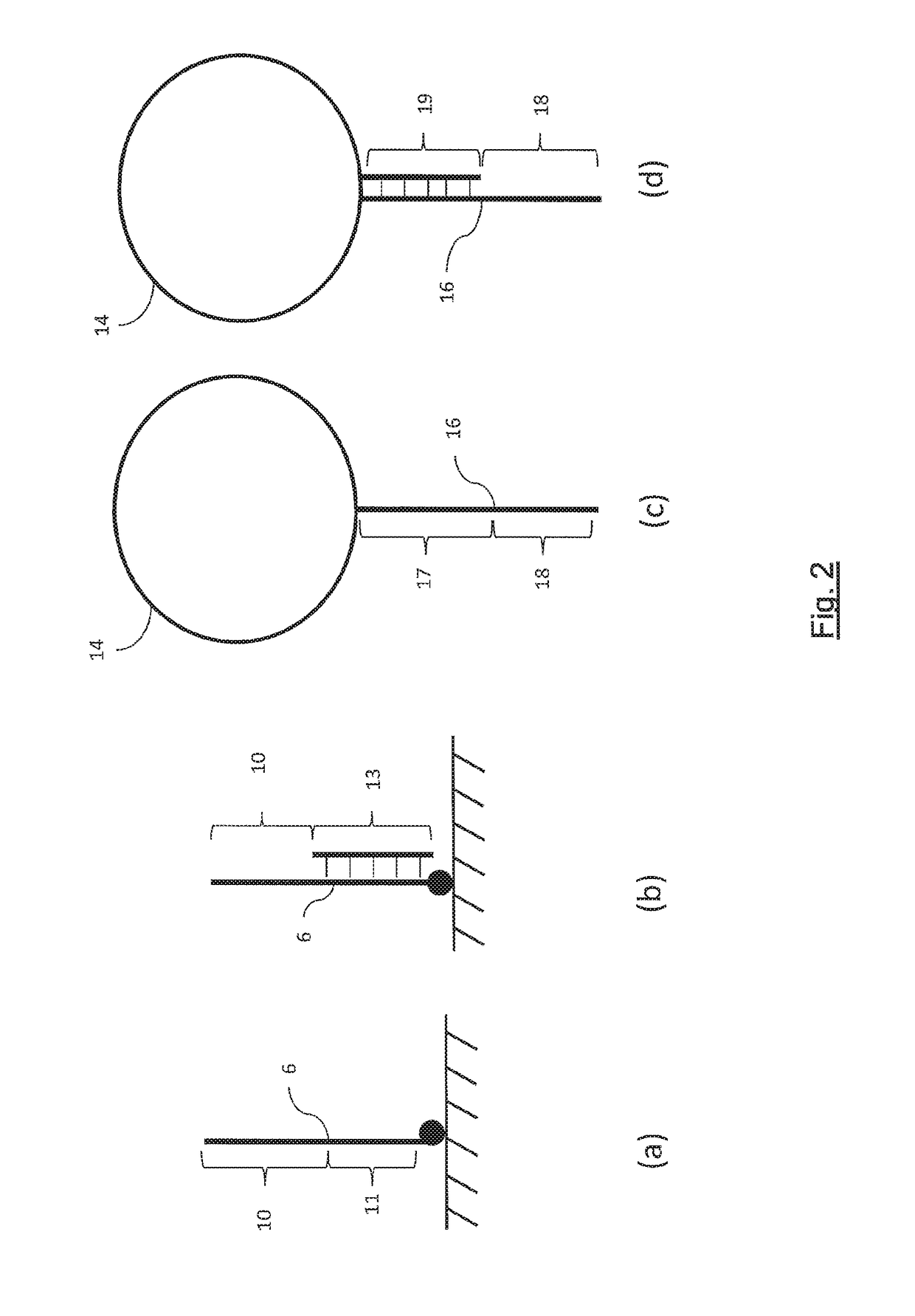Measurement of Analyte with an Acoustic Wave Sensor
- Summary
- Abstract
- Description
- Claims
- Application Information
AI Technical Summary
Benefits of technology
Problems solved by technology
Method used
Image
Examples
example implementation
[0082]In an example implementation for the detection of a single stranded nucleic acid analyte the acoustic wave sensor is a Quartz Crystal Microbalance (QCM) constructed as described in the Materials and Methods section below. The sensor has a quartz crystal substrate 2 and a sensing surface formed by a surface gold layer 4 to which neutravidin is adsorbed. A 5′-biotinylated single stranded DNA molecule is used as the surface probe 6. This probe is formed through PCR or an isothermal amplification process using a suitable set of primers and introduced to the liquid medium which is in contact with the sensing surface. (Short 5′-biotinylated single stranded DNA molecules are also commercially available). The surface probe single stranded DNA adheres to the sensing surface by virtue of the specific interaction between biotin 8 and neutravidin on the sensing surface. Each DNA molecule is individually attached through the biotin which is attached to the end of the DNA molecule. One skil...
PUM
| Property | Measurement | Unit |
|---|---|---|
| Length | aaaaa | aaaaa |
| Length | aaaaa | aaaaa |
| Fraction | aaaaa | aaaaa |
Abstract
Description
Claims
Application Information
 Login to View More
Login to View More - R&D
- Intellectual Property
- Life Sciences
- Materials
- Tech Scout
- Unparalleled Data Quality
- Higher Quality Content
- 60% Fewer Hallucinations
Browse by: Latest US Patents, China's latest patents, Technical Efficacy Thesaurus, Application Domain, Technology Topic, Popular Technical Reports.
© 2025 PatSnap. All rights reserved.Legal|Privacy policy|Modern Slavery Act Transparency Statement|Sitemap|About US| Contact US: help@patsnap.com



